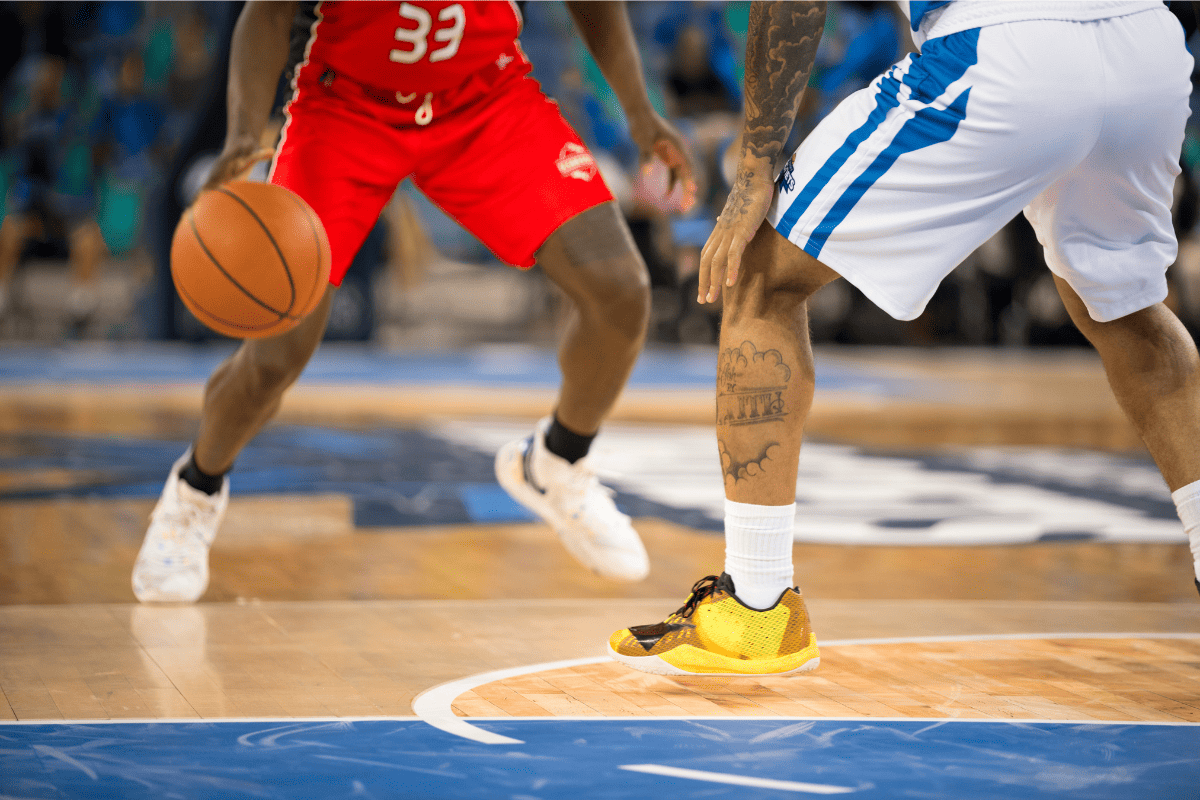What is Double Dribble in Basketball? (Rules 101)
If you’ve ever found yourself amidst the fast-paced action of a basketball game, you’ve likely heard the term “double dribble” thrown around by referees, players, or even the guy sitting next to you munching on popcorn.
It’s one of those terms that has a knack for drawing both cheers and jeers from the crowd, depending on whose team got caught in the act.
But what exactly is a double dribble? Why is it significant? Let’s break it down in a way that even the newest basketball enthusiasts can understand.
What’s a Double Dribble Anyway?
In simple terms, a double dribble is when a player dribbles the ball with both hands, or if they stop dribbling, hold the ball and then start dribbling again.
This no-no is a crucial part of keeping the game flowing smoothly and ensuring everyone plays by the same rules.
Why Should You Care?
Understanding double dribble helps players avoid a common pitfall and lets spectators know when to cheer (or groan) at a crucial point in the game. It’s a basic rule, but it’s got a lot of history and relevance whether you’re on the court or in the stands.
History of the Double Dribble Rule
Basketball has evolved significantly since Dr. James Naismith first nailed a peach basket to a 10-foot-high track in 1891. And just like the sport itself, the rules governing it have seen their fair share of tweaks over the decades.
The double dribble rule wasn’t just pulled out of thin air. It was introduced to ensure fairness and maintain a level playing field. This rule prevents players from gaining an unfair advantage by halting the dribble to see the court and then resuming the dribble to maneuver around defenders.
As basketball morphed from a fledgling game to a global sport, the rules including double dribble underwent refinements to adapt to the changing pace and style of play. The essence of the double dribble rule remained, ensuring that players maintain a continuous, unbroken dribble while maneuvering the court.
Impact on the Game’s Pace and Fairness
The enforcement of the double dribble rule has kept the game fast-paced and exciting, minimizing pauses in play and keeping the action going. It’s also a cornerstone in ensuring fairness in the face of competition, making sure no player gets a sneaky edge by bending the dribbling rules.
Read More:
Breaking Down the Double Dribble
Alright, let’s dive a little deeper into what makes a dribble a double dribble. It’s not just a cool phrase to throw around; understanding this rule can truly elevate your appreciation for the game.
Definition and Basic Understanding
A legal dribble is when a player bounces the ball on the floor using one hand while moving both feet. Seems simple, right? Well, the devil is in the details!
A double dribble occurs when a player:
- Dribbles the ball with both hands at the same time.
- Stops dribbling, holds the ball and then starts dribbling again.
Common Scenarios Leading to Double Dribble
When a player gets a little too excited and uses both hands to dribble, that’s a classic double dribble scenario.
Say a player dribbles, stops to think about their next move while holding the ball, and then decides to dribble again—nope, can’t do that! That’s a double dribble.
Switching the dribbling hand is cool but not if you use both hands to do it. Keeping it clean and switching hands without simultaneous contact is the way to go.
Consequences of Double Dribble
Double dribbling earns a whistle from the referee and the dribbling team loses possession of the ball. Ouch!
Turnovers can be game-changers, giving the opponent a chance to score. A double dribble turnover is a missed opportunity and a gift to the opposition.
Double Dribble in Different Levels of Play
Basketball is played and loved by folks of all ages, from kids in driveways to pros in arenas. But how does the double dribble rule play out across different levels?
In recreational leagues, referees might be a bit more forgiving with younger or less experienced players. But as you move up the ranks, expect the whistle to blow the moment you slip up with a double dribble.
It’s like learning to drive—initially, you’re just figuring out how to steer, but eventually, you’re navigating highways with ease. Similarly, understanding and adhering to the double dribble rule is part of a player’s journey from novice to pro.
Conclusion
We learned that a double dribble happens when a player either bounces the ball with both hands or stops dribbling and then starts again. It’s a fundamental rule that’s been with the game almost since its inception, ensuring fair play and keeping the action rolling smoothly on the court.
So the next time you see a player getting called for a double dribble, you’ll know the history, the reasoning, and the impact of that call. Whether you agree with the ref or not, you’ll have a richer understanding of the beautiful game that is basketball. Plus, you’ll have some cool facts to share with the person next to you.

